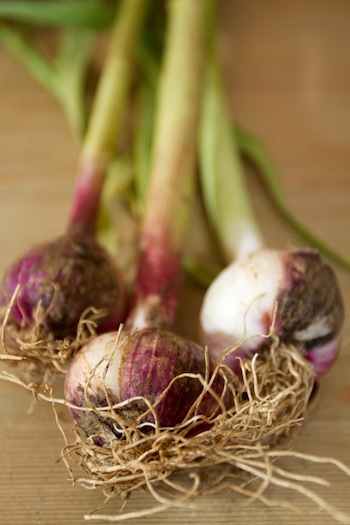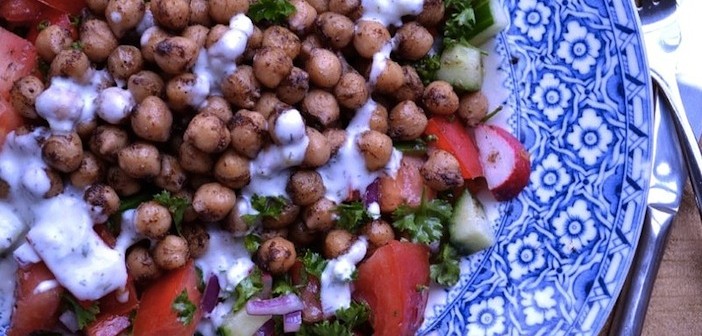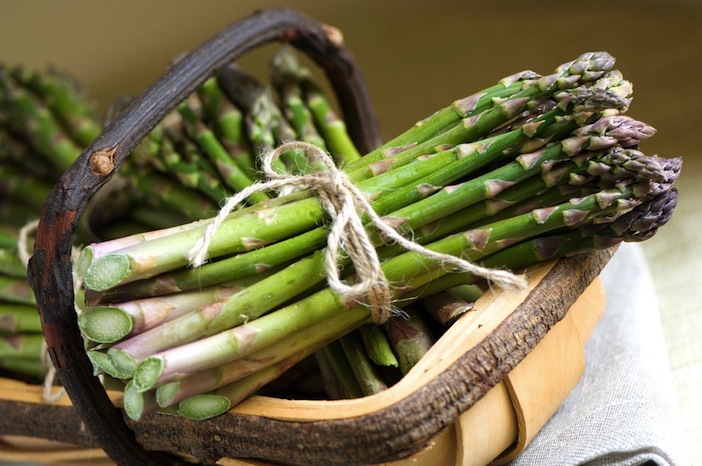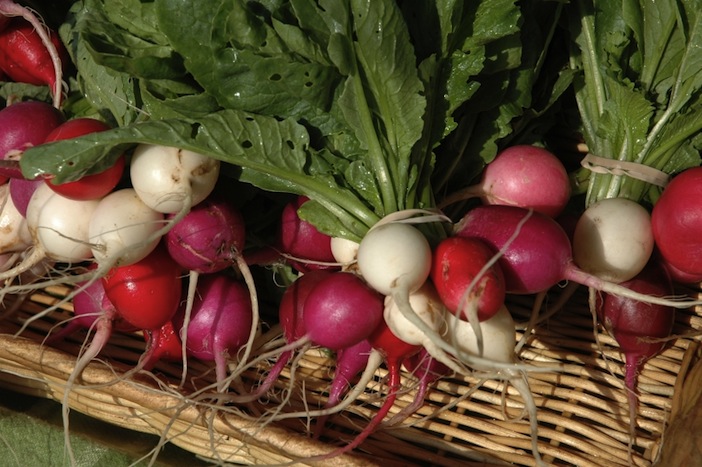The thing about Spring is that after all the chilly months of us waiting for it – of pretty much willing the ground to offer up its first sightings of daffodils and snowdrops – once it does come we seem to rush the new season along in our haste to get to Summer’s more gaudy charms. Well this year I’m going to say ‘no’ to that. Talk of summer holidays and Wimbledon and rose wine that gives me a headache in the sun can just hold its horses a while. There’s Spring to be enjoyed first – and that means an absolute heap of wonderful, flavoursome fresh produce will be vying for our attention in shops and markets. These are just a few of the things to keep an eye out for.
Asparagus is always one of the most hotly anticipated of the Spring arrivals. The best is – obviously – British. Beyond that it can be thin or fat; green or white or even purple. Whether you go in for steaming, boiling or griddling just do remember to never overcook your asparagus. Leave your spears with a bit of bite.
Wet garlic doesn’t get the same kind of fanfare asparagus does but is no less worthy of a place in your shopping basket. Maybe we’re so used to using garlic all year round that it doesn’t feel sufficiently new or different. That is a serious underestimation of how different a prospect wet garlic is. It is very simply young garlic that is enjoyed before being hung to dry. It’s more delicate in flavour and the internal skins that define its individual cloves haven’t yet formed.
If you see wet garlic in the shop please just grab one and take a long, indulgent sniff. It smells incredible. You may swoon. Or at least, I nearly do. If that’s how good it smells just imagine how great it tastes. Strong yet smooth; with a creamy flavour that’s not at all bitter and which deserves to be enjoyed while it lasts. Before it dries into the cloves that we can enjoy the rest of the year.
 Mrs Beeton called garlic ‘acrimonious’. I’m guessing she’d never had a Spring lunch of roasted whole wet garlic on some toast, maybe with some goats cheese too. Prepare the bulbs for roasting by slicing off just a little of the top of each one. Sit them in a roasting dish and sprinkle over some salt and pepper, a little thyme and some butter. After about 40 minutes at 160C the bulbs should be squeezable and their flesh thinking about escaping. Check part way through to see if they’re getting a little dry and add a little water if they seem to be. I also like to roast the bulbs on a bed of fatty pieces of pancetta and serve with salad leaves. With or without the bacon these roasted bulbs work well alongside meat or fish.
Mrs Beeton called garlic ‘acrimonious’. I’m guessing she’d never had a Spring lunch of roasted whole wet garlic on some toast, maybe with some goats cheese too. Prepare the bulbs for roasting by slicing off just a little of the top of each one. Sit them in a roasting dish and sprinkle over some salt and pepper, a little thyme and some butter. After about 40 minutes at 160C the bulbs should be squeezable and their flesh thinking about escaping. Check part way through to see if they’re getting a little dry and add a little water if they seem to be. I also like to roast the bulbs on a bed of fatty pieces of pancetta and serve with salad leaves. With or without the bacon these roasted bulbs work well alongside meat or fish.
Wet garlic is great to cook with too but do bear in mind that it’s much milder flavour means you add it rather later in the cooking process than with dried garlic. There’s not much of this veg you’ll need to throw away. It’s stalks whilst fresh and green can be cooked with like leeks. Garsons Farm Shop in Esher has had some of the best wet garlic I’ve seen.
This month’s column is staying firmly in the vegetable aisle. Radishes next. Peppy little buttons of heat. They come in lots of different colour options beside the familiar round pinky/red ones so keep your eyes peeled for the Purple Plum, China Rose or French Golden varieties. The colours of each are just as you’d expect. The important thing with all radishes is to buy them smooth and firm, with unblemished bright skin. They’ll be the crunchiest and tastiest.
A bright pink radish dipped in a little butter and sprinkled with salt is outstanding with a glass of something cold and boozy. I’d call that a crudite if that didn’t come with connotations of limp carrot sticks. On a similarly retro note I was going to suggest cutting the radishes into little flower shapes but Elizabeth David has rather taken the wind out of my sails on that one. She wrote that these radishes should be “washed, trimmed, but left otherwise as God made them rather than disguised as water lilies.” Spoil sport. I shall risk the wrath of the food writing gods by carrying on regardless and advocating having a little bit of fun with your radishes by splitting them into quarters from top to bottom but crucially not cutting through the base. Pop them into iced water and they’ll open up like chic and not at all kitsch flowers. Drain and dry and serve with the requisite butter and salt.
If vegetable art isn’t your thing then you could always slice the radishes thinly into salads with a simple dressing of olive oil, lemon juice and mint or dill to bring out the flavours. Ottolenghi puts them into a spiced chickpea salad and I recently found Alice Waters’ recipe for a radish, fennel and dandelion which couldn’t be any more seasonal if it tried.
Sliced radishes can also be put to use on a Scandinavian-style open sandwich. Layered up with smoked salmon, chives or parsley and a squeeze of lemon, upon rye bread that’s spread with horseradish sauce. Spring is a great time for horseradish. Even hotter – and admittedly even harder to get hold of – than the autumn’s harvest. A chicken or fish salad is giving an extra something with mayonnaise that has a tablespoon of grated horseradish and some chopped parsley added to it.
Really, the only disappointing thing for me about May is that writing this month’s Culinary Calendar could go on and on and on. You may already feel I have so I’ll leave it at that. It’ll soon be June and the elderflower will be out then. I can’t wait.
Main photo: Chickpea and radish salad by Yotam Ottolenghi






